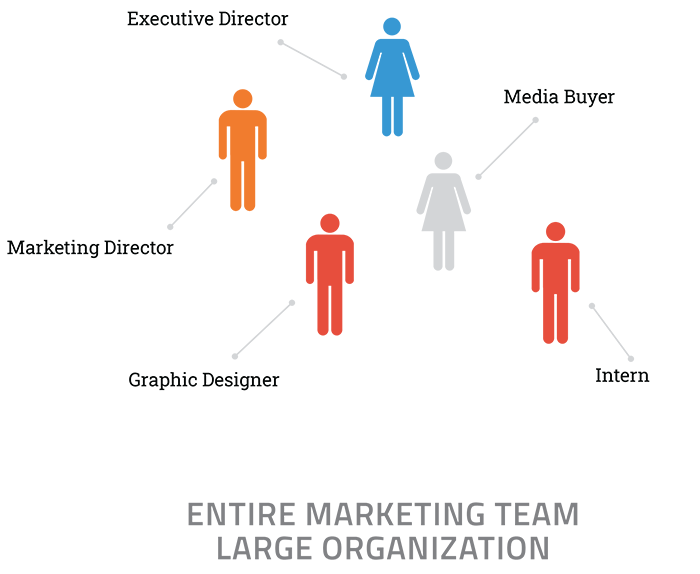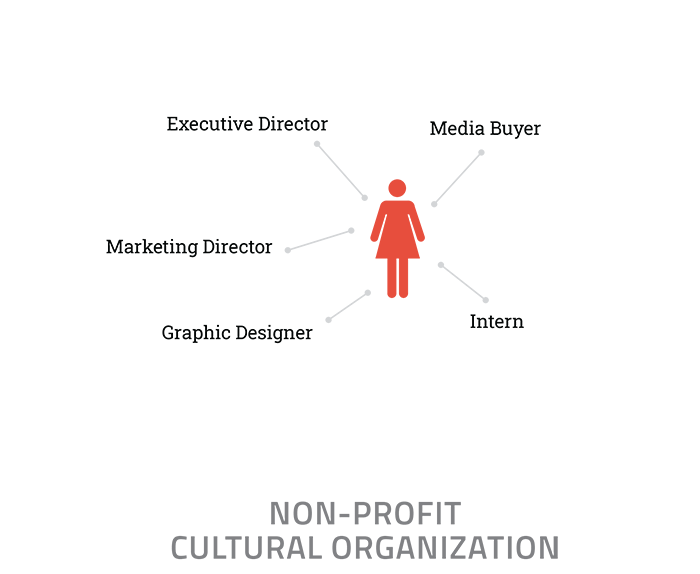Best Strategies for Marketing Non-profit Cultural Organizations

All marketing tasks have their challenges, and while there are some differences between non-profit and for-profit marketing, there are also similarities. Digital technology has changed marketing and advertising forever. For groups who have an arts & culture mission, their challenges tend to be similar. Budget immediately comes to mind, but there are others that can be just as tricky to navigate: grant guidelines and reporting, reaching the right audience, and evaluating results are just a few.
CultureOwl is a marketing platform that brings sophisticated, powerful marketing tools to cultural organizations that may not otherwise have the staff or budget for them, a primary concern for many non-profits. What makes us unique is that we want the same thing as our members, and our audience — to attend great cultural events in our communities and to see the arts not only succeed but thrive. CultureOwl offers cultural marketing expertise to our clients, allowing them to put their best face forward so we all succeed.
Non-Profit Organizations
Non-profit and for-profit organizations differ in their missions. The mission of a for-profit company is first to make money for stakeholders. Typically, non-profit organizations (NPOs) have an obligation, a mission, to do good for a cause. For arts organizations that may include high-level productions, education, and exploring new means of artistic communication. If, for example, selling tickets or gate counts is a major method of supporting your cause, then that should be a primary focus of your advertising and marketing. In fact, when assessing the value of advertising, the impact on those goals must be considered. That said, another issue that is of great concern is budget. NPO budgets are often not as flexible as for-profit budgets. Every penny must be accounted for, whether it be to your marketing team, board, donors, or grant funders.
Marketing and advertising are complex actions with lots of moving parts. CultureOwl gives you multiple channels (mobile, email, web) to reach your potential ticket buyers. And we offer expertise in planning your integrated marketing program for the maximum impact on sales, at non-profit-friendly rates.
Dealing with Small Budgets
Some non-profit budget managers have a tendency to think they can’t afford to advertise. But marketing is a necessity - how else will consumers know about your great productions and valuable contributions to the art and culture ecosystem. One thing that really matters, whether your budget is tiny or huge, is that it can be difficult to see whether your marketing dollars are achieving the desired effectiveness. Marketing can get very expensive, so making sure you’re getting a good value is key. And marketing is complicated—it takes research, planning, management, creativity, and confidence in the choices you make. A certain amount of learning is by trial and error. So while the budget is definitely a factor, a small budget used effectively will bring results. And a large budget that's not managed properly may not be. CultureOwl is affordable. Our CPM measures favorably against many media but the real value in the very targeted nature of our audience. And we are experts at dealing with invoicing and reporting requirements for special funding.
The One-Person Marketing Department
Another big concern for marketing is that often, the staff is spread thin. Executives are wearing many hats—marketing is just one of them. So that person may have a long list of priorities and must devote a minimum of time while attempting to achieve great results. There is not much time to spare for keeping an eye on projects that do not directly relate to production. The upside to ‘doing it all’ is knowing that the right things are getting done at the right time and for the right price. Marketing solutions must be efficient as well as effective. The CultureOwl platform allows you to upload events months in advance, and edit them at any time. No worries about missed deadlines when you can activate your schedule 6 months in advance! Our self-publishing platform is easy to use—like filling out a form. And we are always here to lend a hand if you need it.


3 Areas of Focus: Audiences, Publicity, and Professional Creative
There are many variables in marketing (that’s one reason it can get so complicated!). But there are prime areas of focus that help to establish guideposts to understand and be able to deal with some of the most important ones and create a more direct path to success. The areas of focus we'll be delving into in this blog provide a knowledgeable base on which to build your marketing plan. They are Audience, Publicity, and Professional Content. We will look into ways that CultureOwl can help you succeed in all of those areas.
AUDIENCE
All marketing needs to start with a focus on targeting the right audience. Understanding this is something that we all need to learn. In other words, master this skill and you may be on your way to creating great content. You have a core audience that may include your donors, devotees, and other professionals in the industry. If you are not filling to capacity, the next step is to reach a wider audience of consumers and this is where targeting comes in.
As communicators, we assume that our messages are clear and understandable because they are perfectly clear to us. Everything we say or write perfectly makes sense to us. Think about it. Have you ever written a sentence and thought, "I don't know what I mean!" Of course not! Has someone else ever not known what you meant? Of course. It happens every day, and every time we try to communicate, we need to consciously think about that. The more familiar you are with a subject, the harder it is to ‘get out of the box’ and evaluate your message from the perspective of the person you are trying to influence, who may know little or nothing about your contribution as a cultural/entertainment source.
Another example of an audience targeting error is when groups use jargon or language shortcuts that they assume everyone will know as if they are talking to other artists or their industry group. The people who already know and like you are wonderful—but your reach needs to go far beyond that to people who have never even heard of you. Using plain language that your audience is sure to understand will help them appreciate what you have to offer. Groups have to break out of their own bubble and reach more than just the specific people who are interested in their specific genre. Seek audiences that are larger in scope, yet with a similar interest. For example, if you’re a dance group, don’t just target dance lovers. Instead, target performing arts lovers. This is the way to build and expand your audiences as opposed to speaking to the same small group over and over again.
At CultureOwl, our calendar reaches a wide range of cultural happenings including visual arts, performance arts, film, museums, music, nightlife…and of course nearby restaurant recommendations too.
PUBLICITY, PR, OR ADVERTISING?
At CultureOwl, we occasionally hear people running non-profits say, "We don't pay for advertising." What they're really saying is "We don’t advertise." One of the biggest mistakes companies make is not understanding the difference between Public Relations and Advertising. While they work in tandem to benefit your overall marketing image, their process is very different.
Let's look at the basic differences between the two. We all understand paying for ads. You may (should!) pay a designer to create an ad but since you can use the ad anywhere, the significant cost is ad placement, that is, paying for the space on a website or in a paper publication. When PR companies get a story published they do not pay to do it. This is known as "Earned Media". That is where the client company has done something, usually for a good cause, to "earn" a story written about them. Stories, if read, help build relationships between a company and the publication's readers. The widespread success of a PR story depends on many media outlets deciding that the story is what they want their readers to see.
So, you pay the PR firm to create the content. You pay them to "pitch" your stories to their media partners. But there’s no guarantee that anything will be published or read by anyone or that publications that reach your target audience will pick it up. You're depending on the PR firm to have a good relationship with a media outlet that reaches the kind of audience that presumably will like your offerings. That is a lot of uncertainty that has real costs. In addition, you have no control over the content. The publication can edit your story any way they like.
With paid advertising, you choose the publication or outlet, and therefore the specific audience you want to reach. And you get the space you pay for, guaranteed. You control the content 100%. There are other ways that PR and advertising differ that involve public perception, including cost and measurable effectiveness.
CultureOwl combines the best of both worlds. We are not a "pay-to-play" platform, but one benefit of being a CultureOwl member is that you receive editorial priority. Our editorial system is geared toward promoting arts and culture. Our advertising members want to promote cultural events. So members automatically "earn" editorial as they do their part to advance art and cultural events. We all share the mission of supporting arts & culture and building communities.
CREATIVE
While on stage or in a performance, most organizations show the highest professionalism. But when it comes to creating advertising, too often non-profits rely on people with limited skills or experience, thinking they cannot afford a designer or undervaluing those skills. Sometimes images are sub-par (fuzzy or bad composition) or the overall design doesn't follow proven marketing principles.
The level of your advertising and promotional content sets the tone for what people expect when they come to your event. Marketing or advertising that is less than professional can negatively affect the audience's perception of a company. They may hesitate because they relate the quality of advertising to what they will see on stage. CultureOwl is a trusted source for content. Our "followers" expects a certain level of quality in the events that are promoted on our platform, including professional creative, and accurate information.
Conclusions
Most companies, especially cultural organizations, can really use the tools that make marketing and advertising more professional-looking and much more simple to execute. Important factors such as targeting the right audience, differences between Public Relations and advertising, and creating professional content are basic considerations for all advertisers. While you can't control every marketing variable, those are three areas that can and need to be produced with high quality for better results.






